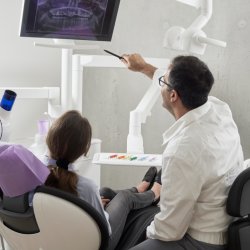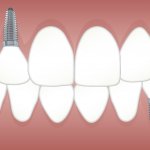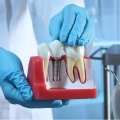Smart Strategies for Wisdom Tooth Extraction in Las Vegas
Why Skilled Third-Molar Care Matters
Impacted wisdom teeth can silently disrupt oral health, resulting in pain, infection, and shifting teeth. Ignoring third molar issues may create new dental problems, such as decay on neighboring molars or damage to jaw structures. A well-executed extraction provides preventive care, stopping risk before it grows.
Delayed extraction often leads to severe complications. In one real situation, a young adult postponed treatment for a painful, partially erupted molar. Over several months, the area developed an infection that spread to adjacent teeth, requiring multiple extractions instead of just one. Proactive, skillful third-molar care protects comfort, health, and the integrity of the bite.
Recognizing Symptoms That Signal Third-Molar Extraction
Several signs suggest a wisdom tooth might need removal:
- Persistent throbbing pain in the back of the jaw
- Gums that are swollen, red, or bleeding
- Recurring infections near the tooth
- Bad taste or odor in the mouth
- Notable pressure or shifting in other teeth
Each of these symptoms deserves prompt evaluation by a dental professional. Relying on home remedies or waiting for pain to subside can allow conditions to worsen. Gum inflammation, for example, can soon progress to deep infection. Ignored infection can damage bone or adjacent molars, requiring more complex treatment.
Many extractions happen before pain appears. According to the American Association of Oral and Maxillofacial Surgeons, around 60% of wisdom tooth removals occur in people who do not yet have symptoms, often to prevent later problems. Regular dental visits help catch potential trouble early, keeping intervention simple and recovery smoother.
Comparing Modern Third-Molar Extraction Methods
Techniques for wisdom tooth removal depend on the tooth’s position:
|
Extraction Type |
Best For |
Main Benefits |
Drawbacks |
|
Simple Extraction |
Fully erupted teeth |
Short recovery, minimal risk |
May not suit impacted teeth |
|
Surgical Extraction |
Partially/fully impacted teeth |
Addresses all positions, thorough |
Slightly longer recovery, more involved |
Sedation options help tailor comfort to the patient:
- Local anesthesia: Good for mild anxiety, quick recovery.
- Oral sedation: Eases moderate anxiety, mild drowsiness.
- Nitrous oxide: Calm relaxation, rapid end of effects post-procedure.
- IV sedation: Deepest relaxation, helpful for severe anxiety or complex cases.
Choosing the right approach:
- High anxiety or tough medical history—IV sedation may work best.
- Simple removal for a single, erupted molar—local anesthesia or nitrous oxide may suffice.
- Surgical removal for multiple impacted teeth, or those close to nerves, may combine methods.
Each method balances comfort, recovery time, and safety. Simple extractions offer faster healing with minimal discomfort, while surgical cases need more care due to swelling and longer downtime. Discussing personal needs and concerns ensures the safest path forward.
Post-Procedure Guidelines for Smoother Recovery
Successful healing relies on following aftercare closely. Key steps include:
- Pain control: Take medications as directed; apply ice packs for 10–20 minutes at a time during the first 24 hours to limit swelling.
- Nutrition: Eat soft foods—yogurt, applesauce, smoothies; drink plenty of water, avoiding straws to protect the clot.
- Oral hygiene: Gently rinse with salt water after meals using a cup (not strong swishing). Do not brush close to extraction sites for the first day.
Monitor for “red-flag” symptoms:
- Heavy or persistent bleeding
- Increasing pain after the first 48 hours
- Fever, chills, or pus
- Severe or growing facial swelling
Contact the dental office immediately if these arise. Most patients return to normal activities within three to five days, but strenuous exercise should wait about a week. Regular check-ins with the dental team help track progress and address questions.
Selecting a Specialist for Third-Molar Surgery
For those comparing credentials and treatment philosophies, reputable practices offering wisdom teeth removal Las Vegas often highlight board-certified oral surgeons and state-of-the-art imaging technology. Look for:
- Board certification and continuing education
- Transparent, detailed cost estimates
- Positive patient reviews and testimonials
- Clear, thorough discussion of the proposed treatment plan
A careful, consultative approach helps set expectations and gives each patient a voice in decision-making.
Taking Confident Steps for Third-Molar Health
Quick recognition of symptoms, smart choice of extraction method, and attentive aftercare support long-term oral health. Selecting a well-qualified specialist and following all instructions builds trust and smooths recovery. Proactive care today guards against discomfort, future dental problems, and keeps the smile healthy for years.
More to Read:
Previous Posts:





